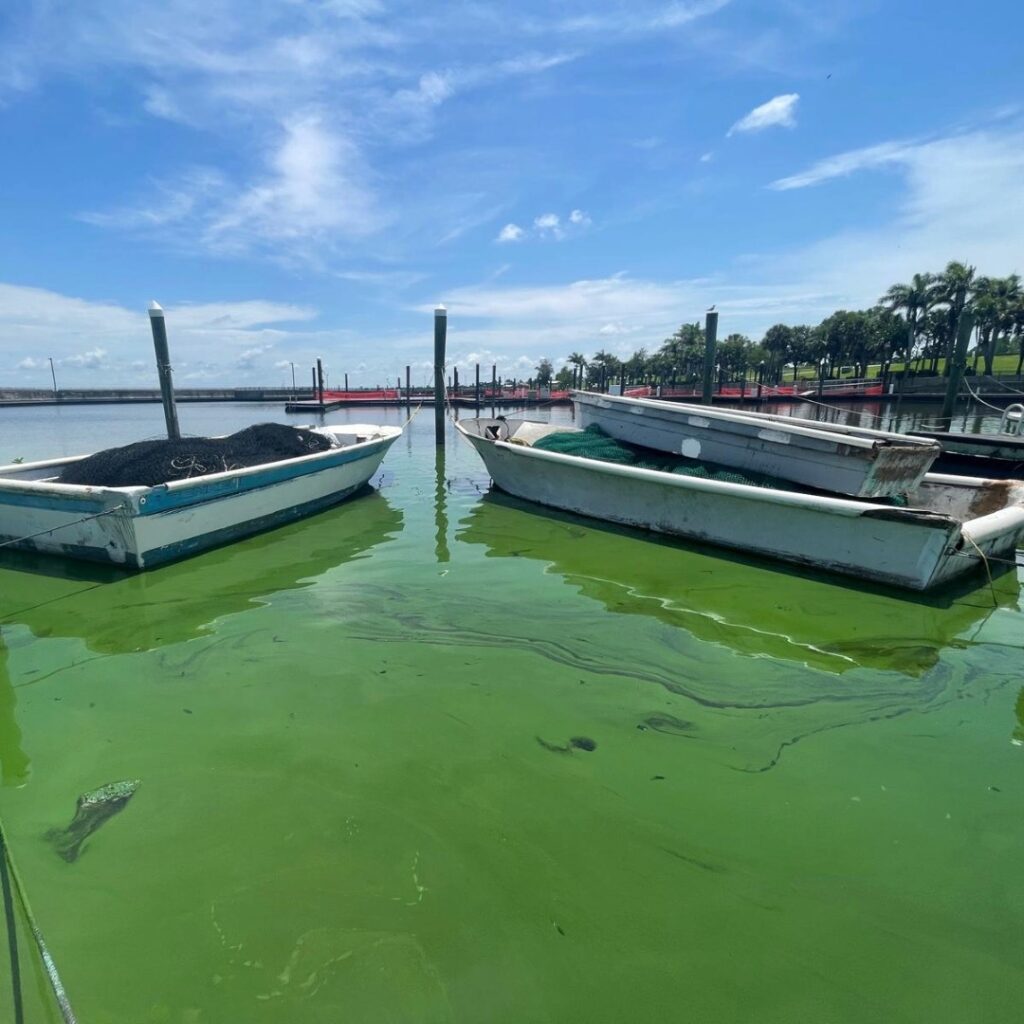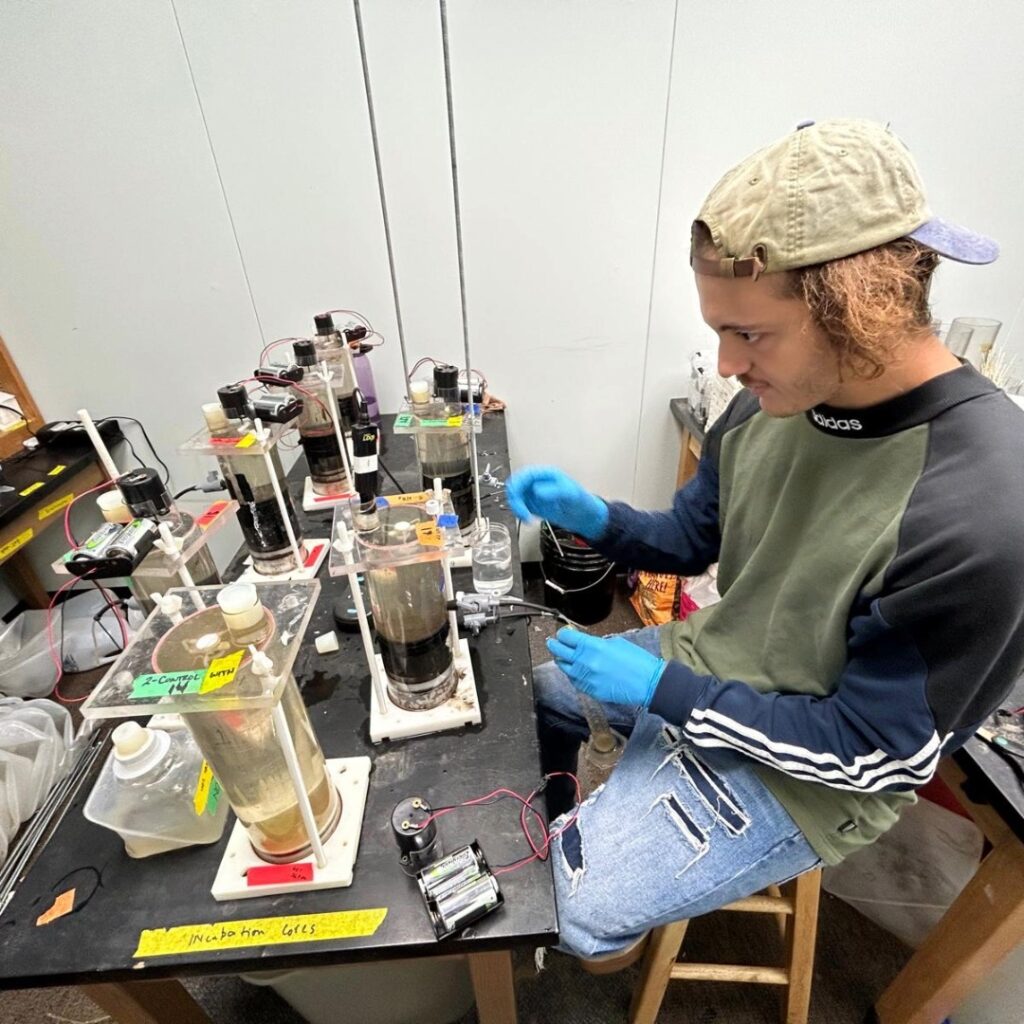Aylesworth Scholar Spotlight: Owen Silvera’s Insights on Sediment and Harmful Algal Bloom Research in Lake Okeechobee – Technologist
Owen Silvera (pictured bottom-center) with his research team at Lake Okeechobee. Image by Owen Silvera.
In the early mornings and late nights, from sunrise to sundown, graduate student Owen Silvera and his colleagues embarked on countless expeditions in Lake Okeechobee.
“I recall spending entire days there, focused on collecting sediment in hopes to reveal deeper truths about the chemistry that drives algal blooms, the predominant concern of Lake Okeechobee. We worked tirelessly on those days, in our boat; sometimes in areas of national intrigue such as Pahokee marina, just ten feet from shore, which has so often been the center of coverage on algal blooms by the media” says Silvera.
However, Lake Okeechobee is a vast water body which Silvera gives scale to by it being larger than Nassau, Bahamas, the island of his birth. Alongside the Geochemistry and Geochemical Sensing Laboratory at FAU, he has collected sediment from every reach of the Lake. Researching the sediments tells a story that extends beyond the mere task at hand, offering a glimpse into a larger narrative that unfolds across Florida’s largest lake, Lake Okeechobee, concerning harmful algal blooms.
While harmful algal blooms and nutrient dynamics are often associated with direct runoff from stormwater, sediments also play a significant role. Owen Silvera’s research journey, supported by the Aylesworth Scholarship, has provided him with the support to study the interplay between sediments, harmful algal blooms (HABs), and water quality in vast shallow lakes like Lake Okeechobee.
“I’m passionate about conducting research that directly impacts the economy, such as harmful algal blooms which can trigger states of emergency. This aspect of my work resonates deeply with me because I strive for tangible results that positively affect people’s lives,” says Silvera.

Blue-green algae at marina located on Lake Okeechobee. Image by Owen Silvera.
“Sediments play a pivotal role in ecosystem dynamics. In Lake Okeechobee, characterized by its shallow depth and susceptibility to strong winds, sediment resuspension emerges as a significant phenomenon that swiftly introduces nutrients into the water column that can influence algal blooms.”
Sediment resuspension is the process in which small particles of rock from the ground or settled at the bottom of a body of water are stirred up and brought back into the water column through wave action, currents, or turbulence, as well as human activities like dredging or boating can result in suspension. Even though Lake Okeechobee stands as a case study, this research is applicable throughout Florida.
“In Florida, we have a lot of shallow lakes. When large winds pick up, there may be no wind blockage over the whole course of these lakes, driving waves and faster currents. Since these lakes are shallow, sediments are very close to the surface and there’s not much space for that energy to dissipate, and so the sediments are easily resuspended,” says Silvera.
Particular concerns are the nutrients within sediments, notably nitrogen and phosphorus. While algae predominantly rely on these elements, sediments harbor additional substances like metals, with iron also being a focal point of Owen’s research. The resuspension process exacerbates nutrient loads and imbalances, which can potentially directly influence the bloom of species such as microcystin-producing blue-green algae.
“From this research, we see that the sediments that are in suspension from Lake Okeechobee specifically affect the loads of nitrogen and phosphorus that are going to the coasts. Indeed, new research shows that nitrogen from Lake Okeechobee released into the Caloosahatchee, is linked to even the red tide algal blooms in the Gulf of Mexico.”

Silvera assessing collected sediments in the lab. Image by Owen Silvera.
Fieldwork Brings Local Perspectives and Observations to Harmful Algal Blooms
“In 2021, the Pahokee Marina made several national headlines due to severe blue-green algal blooms. Fast forward to now, and we find ourselves conducting our work amidst the strong odor emitted by the blue-green algae, which is notoriously foul-smelling. And these are the same waters that people are fishing in. We are seeing those impacts firsthand on the environment and community,” says Silvera.
Silvera and his research team employs a combination of monitoring and experimental approaches to observe sediment and nutrient dynamics. Field expeditions typically involve water sampling and sediment collection, while laboratory simulations of resuspension events help us control and better understand nutrient dynamics during such events.
“During the wintertime and spring, you get really high winds over Lake Okeechobee, which limit algal blooms. Even though there is so much sediment in the water column loaded with nutrients, the algae can’t make use of these nutrients when they are limited by light. However, in the summertime, when things start to settle out of the water column, the nutrients that remain are then slowly taken up by algae, and they bloom pretty much every summer. In particular, we study sediment-water interactions to monitor the conditions which promote intense algal blooms of potentially toxic species because there are still many unknowns which we can potentially mitigate against with greater knowledge.”
Hurricanes are just one example of a weather event when we might expect sediments to be resuspended. The focus around such extreme weather events has primarily been on overall changes in overall water quality. However, land drainage and sediment resuspension act together to increase the total nutrient load, i.e., suspended in the water column. Owen’s research separates the complexity of mixed inputs associated with natural storm events and highlights the specific detriment of sediment inputs. Moreover, all of these nutrients are then funneled towards the Atlantic Ocean and Gulf of Mexico during release periods. This water passes through the St. Lucie and Caloosahatchee estuaries, carrying with it at certain times toxic algae, but always organic sediment to repeat cycles of eutrophication far beyond the central state lakes and agricultural watersheds.



